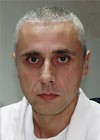Invited lectures 2012
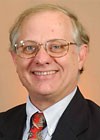 | University of Texas at Austin, USA The Evolution of Materials for Additive Manufacturing |
Materials have always been critical to additive manufacturing (AM) technologies. Originally, materials selection for AM concentrated on the manufacturing properties and material availability in the requisite product form. As AM advanced, the focus has shifted towards part service properties. This was accelerated in the last ten years with the transition from prototyping to functional part applications. A hierarchy of materials for AM is proposed which includes single-phase materials, alloys and composites. Post-processing routes impact service properties as well. Factors giving rise to mechanical properties of AM parts will be reviewed including specific research currently underway in the Laboratory for Freeform Fabrication at The University of Texas at Austin. | |
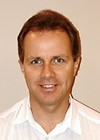 | Loughborough University, UK Artistic Engineering |
In many parts of the world there are cultural, educational and economic divides between the worlds of artists and engineers. They are seen to have different aims, speak different languages and create different outcomes. However, the advent of additive manufacturing and related digital technologies has provided a route for these divides to be bridged. This paper presents a range of innovative designs from several fields that embody the principle of artistic engineering. The designs are analysed to determine how and why the fusion between art and engineering has been accomplished. The paper will also address the issues that must be resolved if such inter-disciplinary design is to flourish in future years. | |
 | Esq., Partner, Patent Counsel, Mechanical Engineer, Cantor Colburn LLP, UK Intellectual Property in Additive Manufacturing |
Intellectual Property is a key component in the development of new products and inventions in additive manufacturing. Determining the intellectual property rights to a new design or method at the start of a project is a critical step. Common forms of intellectual property protection, such as contracts, patents, trademarks and copyrights, will be reviewed. The use of intellectual property to spur innovation, such as State of the Art Reports and Patent Mapping, will also be discussed. | |
 | FutureFactories, UK Additive Manufacture: Added Design Value |
Direct manufacture was quick to take off in the decorative lighting market. Unusual, seemingly impossible shapes and a subtle glowing white material captured the public imagination. | |
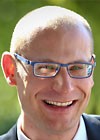 | Lithoz (Austria) Technical ceramics for additive-manufacturing-technologies |
Additive manufacturing technologies are already established in the plastic and metallic industry, but the ceramic industry has very rarely used these technologies for their purposes. There is a strong need for the introduction of AM-Technologies, because no sufficient prototyping technologies exist and the tools for powder injection moulding are very expensive. These are actually perfect conditions for the implemation of AM-technologies, but since ceramic materials are used where other materials fail, the quality and the reliability of the parts are crucial. Yet, no ceramic AM-process has been developed, which reaches the needed accuracy, density and strength. | |
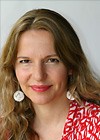 | Nomili, South Africa Moveable Sculptures |
Digital design and additive manufacturing makes it possible to create objects that are impossible to fabricate by any other traditional means. Through this method I have been able to create sculptures that have moveable components fabricated with no assembly required. This presentation describes the process of creating the artworks from the initial idea to the digital sculpting process and additive manufacturing. The Horse Marionette, The Rocking Springbuck and Birdman sculptures are discussed in detail. | |
 | Executive Director, RapidTech, the National Center for Rapid Technologies, USA Community Colleges and Universities a successful partnership model |
|
RapidTech the National Science Foundation Center for Rapid Technologies has been instrumental in developing partnerships between the Community College and University. There has always been a large divide between Community Colleges and University communities Rapidtech has created a model that removes boundaries and allows the 2 entities to work together for a seamless student educational experience. The process while not easy takes into account the various challenges faced by the institutions and builds upon common ground to provide a technically competent workforce. This paper will discuss the salient points of crafting a Memorandum of Understanding (MOU) and challenges with working within the university system. We will also discuss several case studies for both undergraduate education and research enabling collaboration. | |
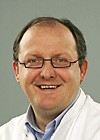 | Dep. Basic Medical Sciences, Faculty of Medicine, University Hasselt, Belgium Dep. Cranio-maxillofacial Surgery, Medical Center Heerlen-Sittard, The Netherlands 3D PRINTED JAWBONE : A NEW ERA IN RECONSTRUCTION ? |
| |
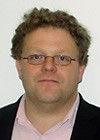 | Managing director, Econolyst Ltd, UK Global research trends in Additive Manufacturing - reviewing the past to inform the future |
In this presentation Dr Phil Reeves will provide an overview of a recent study (2012) looking into global research trends in the field of Additive Manufacturing. The study considers the globalisation of AM research activity through a review of research publications and research funding. Following an analysis of over 490 academic papers presented at 17 global AM conference in 2011, the study establishes both the scale and scope of AM research activity, and the Technology Readiness Level (TRL) of AM innovations. | |
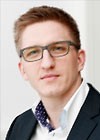 | Dreve, Germany LMove Heads - The Scan LED Technology |
The building envelope of static DLP-based RP-Systems like the 3D Micro Printer is always restrained by the DLP-Chip size and a reasonable pixel magnification. This fact leads to rather small part dimensions in the X-Y plane compared with Stereo Lithography systems. | |
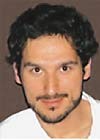 | Orthopaedic Hospital Stolzalpe, Department for Hip- and Knee Reconstruction, Austria Custom-fit Total Knee Arthroplasty |
Recently, new custom-fit pin guides have been introduced. Based on magnetic resonance imaging (MRI), a three-dimensional model of the patient’s knee anatomy is created. Based on this, femoral and tibial pin guides are designed. These are used on the patient during surgery as a guide for the pins to determine the standard cutting blocks; use of these guides may reduce operating time. Use of the guides combined with the absence of intramedullary femoral and tibial alignment jigs may lead to reduced blood loss. Use of these guides may lead to improved alignment. There is a lack of data in the literature concerning custom-fit pin guides. Our first experiences and results of this new technique in total knee arthroplasty will be presented. | |
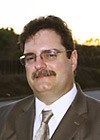 | Director, RapidTech, the National Center for Rapid Technologies, USA Career Pathways in Additive Manufacturing a systematic approach to Technical Education |
|
There is an evolutionary change in Additive Manufacturing (AM) workforce education. American education is trending towards smaller unit centric certificate programs to that end RapidTech the National Science Foundation Center for Rapid Technologies is developing a stackable and latticed certificate framework that aligns the core and professional competencies with the ASTM F.42 standards. This is the first time that an educational framework has been developed alongside a global standard. This groundbreaking approach to creating a technically competent workforce incorporates Science Technology Engineering Arts Mathematics (STEaM) classification utilizing a standardized STEaM RUBRIC and separates competencies into knowledge or skill based components. This emerging educational model lends itself to project based learning (PBL) which is a learner-centric pedagogy where the learner is expected to take responsibility for the learning process. RapidTech at the urging of industry advisory groups and various educational institutions is working to convert this learning pedagogy in additive manufacturing to a hybrid distance education project-based learning environment that can be available nationwide. This approach is novel in several respects. It takes traditional classroom materials and converts them to a distance learning format and then provides collaboration tools for the project-based learning aspect of the courseware while maintaining the competencies established in the ASTM F.42 standard. | |
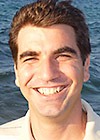 | University Clinical Centre Ljubljana, Department of Traumatology, Slovenia Preoperative planning of intraarticular fractures using EBS computer programe |
A developing computer program for preoperative planning of articular fractures is presented. The program consists of three closely integrated tools, the 3D viewing tool, the segmentation tool and the reduction and fixation simulating tool. Data from CT of a fracture in DICOM format are used. First the 3D model is made, and then fracture segmentation is carried out, where each fracture segment is made as an individual object. In reduction each fracture segment can be moved in all three directions, it can be rotated in all planes and its pivot point of rotation can be changed. After reduction virtual fixation can be undertaken, either with plates that can be automatically contoured or with pre curved plates that are already in program database or they can be inserted as a new object. The plan of automatically contoured plates can be drawn and printed out in 1:1 scale. The most important is that all the steps can be carried out on a personal computer by the surgeon who is doing the preoperative planning. This is the complete novelty since segmentation can be carried out by the surgeon. In that way all the fracture lines and planes are studied in preoperative planning. And according to them osteosynthesis is planned. We compared classic preoperative planning with computer assisted preoperative planning. We evaluated in how many cases the approach was changed and different implants were planned. Evaluation was done in 20 cases that were admitted to our department of fresh articular fractures where preoperative CT was indicated and done. We found out that change in planned approach was done 20% of cases and different implants were selected in 25 % of cases. Preoperative plan was changed in 35% of cases. The presented computer program is an easily usable application which brings significant value and new opportunities in clinical practice, teaching and research. | |
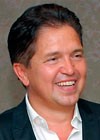 | Orthopedic surgeon, GH Ptuj, Univ.Maribor Personalized Hip, Shoulder and Knee Endoprosthetic |
The aim of the modern Endoprosthetic is the optimal imitation of the individual human biomechanics, due to determination of the real 3D-mechanical joint axis and joint kinematics. Preoperative 3D-CT scan of degenerative joint enables a creation of a virtual and individual plastic 3D-joint-model with the determination of the optimal and exact joint resection levels. A standardized CT-protocol for joint images with minimum irradiation was created, supported by the specific computer program for trusty segmentation of the CT images, to create a 3D model of the affected joint. Upon this model the planed resection lines were incorporated into an individual joint model with belonging jigs. | |
 | Wohlers Associates, USA The Impact of Recent Trends in Additive Manufacturing |
The additive manufacturing industry is moving quickly in multiple directions. At the high end, companies are at work qualifying machines and materials for the direct production of parts that go into final products. The potential return on investment has gotten the attention of some of the largest and most respected corporations in the world. At the low end, many are trying to understand the financial and market implications of kits and systems costing less than $2,000. And then there’s everything in-between. The level of activity is at an all-time high as researchers, investors, and others try to predict where it is headed. Wohlers will present the latest trends and discuss how they will shape the future of this exciting and fast-developing industry. | |
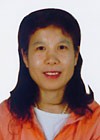 | Key Laboratory for Advanced Materials Processing Technology, Tsinghua University, China Business Innovation Technology (BIT) Research Centre, Aalto University, Finland Cell assembling techniques for complex organ manufacturing |
Complex organ manufacturing is an interdisciplinary field with the crosslinking of biology, material science, medicine, mechanical engineering and computer science. Rapid prototyping (RP) or additive manufacturing (AM) techniques are enabling manufacturing processes that automatically produce very complex structures directly from computer-aided design models with high resolution and sophistication. Over the last eight years pioneering work has been done by the author’s group with single/double nozzle cell assembling techniques and shown that cells can survival the heterogeneous fabrication, polymerization/crosslinking, and storage stages with the available RP techniques. There are many outstanding advantages for the double-nozzle low-temperature deposition manufacturing (DLDM) technique in complex organ manufacturing. State-of-the-art of the layer-by-layer modeling, material incorporation, and manufacturing principles of the DLDM is demonstrated in Figure 1. It is expected that in the following several years the RP or AM technology will see its major break-through development stage and demonstrate its unique power in complex organ manufacturing and some of other related fields, such as high throughput drug screening, fluorescent dye discovering, energy metabolite model establishing and cancer/stem cell behavior controlling. | |
